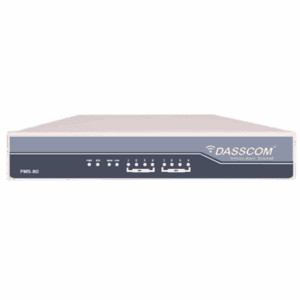IP AMPLIFIER
Dasscom DS-300 Network Amplifier
The Dasscom Ds-300 Network Power Amplifier is designed for Commercial audio applications, Utilizing advanced Class-D Technology to deliver Crystal Clear Sound and Exceptional reliablity
The Dasscom Ds-300 Network Power Amplifier is designed for Commercial audio applications, Utilizing advanced Class-D Technology to deliver Crystal Clear Sound and Exceptional reliablity
DS-300
| Brand |
|---|
| Amplifier Topology | Class-D | ||
| Frequency Response | 20Hz ~ 20KHz ± 0.25dB | ||
| THD+N(@1kHz) | 0.05% | ||
| SNR | 85dB | ||
| Audio | |||
| Audio Output Connectors | 1 x 4-Pin Phoenix Connector | ||
|
Audio Output Power |
SE(Single End ed): 2 x 115400W | ||
| BTL(Bridge Tied Load): 1 x 238000W | |||
|
Audio Input Connectors |
Balanced: 2 x 3-Pin Phoenix Connectors | ||
| Unbalanced: 2 x RCA Jacks | |||
| Bluetooth: 1 x IPX1 External 2.4G Antenna(BT 5.3 Compatible) | |||
| Network: 1 x RJ45 Connector | |||
| Audio Input Amplitude Range | 0.1Vrms ~ 2Vrms | ||
| SIP Audio Codecs | G.722, G.711 A-law, G.711 U-law, Opus | ||
| SIP Audio Stream | MP3 Sampling Rate 8-48KHz, Bit Rate 64- 320kbps, Mono or Stereo | ||
| AC Power | |||
| Power Input Voltage | 100 ~ 240VAC 50/60Hz | ||
| Power Input Current | 1.5A | ||
| Network | |
| Network | 10/100Mbps Adaptive |
|
Network Protocols |
SIP(RFC3261 ), HTTP, TCP/IP, SSL, DNS, SNTP, NTP,
RTSP,PTP, RTP, RTCP, TCP, UDP, MOTT, ICMP, DHCP, ARP, SSH |
| Dante | Supported |
| ONVIF | Supported |
| Interface | |
| USB | USB 2.0 |
| Dry Contact Output Connectors (Reserved) | 1 x 3-Pin Phoenix Connector |
| Switch Input Connectors (Reserved) | 1 x 2-Pin Phoenix Connector |
| Physical | |
| Chassis | Metal, Black, 1U Standard Chassis |
| Weight | 2.75kg |
| Dimensions | 17.32″ x 6.69″ x 1.73″ (440mm x 170mm x 44mm) |
| Environmental | |
| Operating Temperature | -20°C ~ 70°C (-4°F ~ 158°F) |
| Storage Temperature | -40°C ~ 70°C (-40°F ~ 158°F) |
| Approvals | |
|
General |
FCC SDOC (Part 15B), CE (EN 55032: 2015+A11: 2020 EN 55035: 2017+A11: 2020, EN IEC 61000-3-2: 2019+A1: 2021, EN IEC 61000-3-3: 2013+A1: 2019+A2:
2021, ETSI EN 301 489-1 V2.2.3 (2019-11), ETSI EN 301 489-17 V3.3.1 (2024-09), ETSI EN 300 328 V2.2.2 (2019-07), EN IEC 62368-1: 2020+A11: 2020) |

























